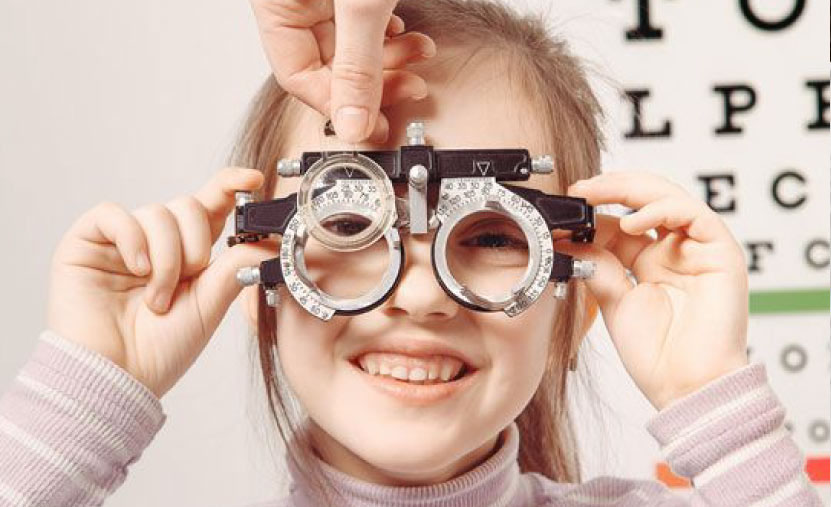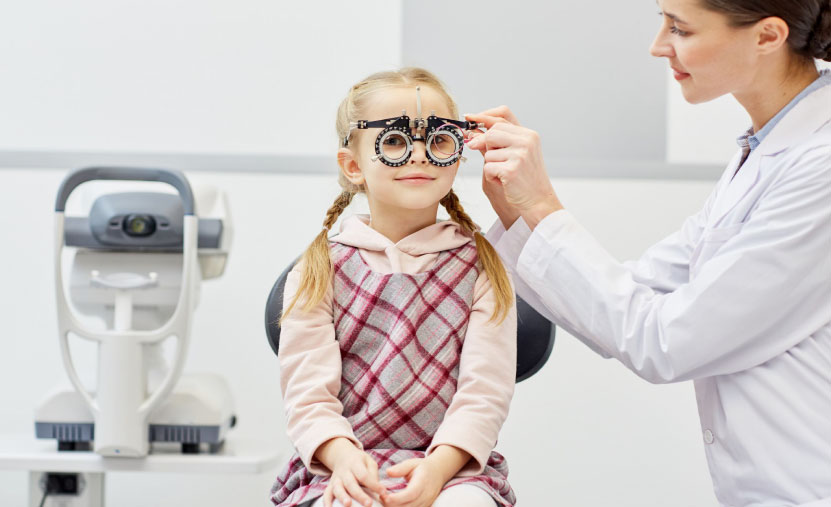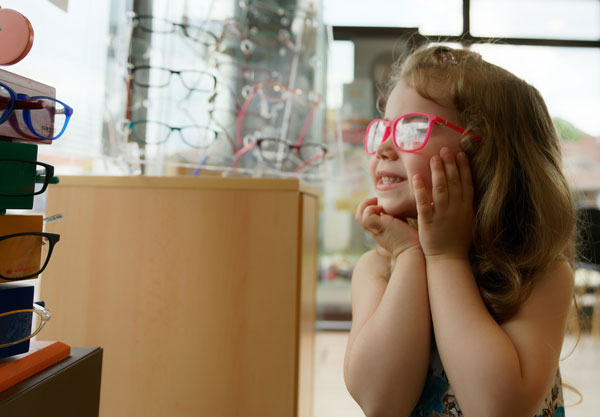How to Know When
It’s Time to Schedule an
Eye Exam for Your Child
When children are home for summer vacation, it can be easy to forget about eye health. Most children will spend more time playing outside and enjoying the warm weather than doing things that require more focus, like reading or writing. This makes it easier for their vision problems to go unnoticed.
It’s important to remember to schedule an eye exam for your children this summer — even if they aren’t complaining about their vision. Here’s why:
The Importance of Clear Vision for Children
The American Optometric Association recommends scheduling your child’s first eye exam when they’re between 6 and 12 months old. Ensuring that your children have clear vision is incredibly important, and not just because everyone deserves to see the world clearly! Eyesight can affect crucial parts of a child’s life, including:
- Education: According to the Journal of Behavior Optometry, children under age 12 acquire 80% of their knowledge through visual learning
- Hand-Eye Coordination: Bad eyesight can lead to poor hand-eye coordination, which is essential for academic and athletic activities alike
- Socialization: Not being able to see clearly can make participating in activities with other children difficult, and lead a child to isolating themselves rather than socializing with friends


Signs That It’s Time for an Eye Exam
We recommend that you schedule routine eye exams for your children every year to ensure that they have healthy eyes — and to make sure that they can see clearly during these important developmental years!
We recommend annual eye exams whether or not your child has complained about vision problems. After all, kids often won’t realize that their vision is blurry, because they have never experienced what clear vision should look like. Children can, however, display symptoms of vision difficulties without realizing it. If your child does any of the following, it’s time to schedule an eye exam.
Signs That It’s Time for an Eye Exam
We recommend that you schedule routine eye exams for your children every year to ensure that they have healthy eyes — and to make sure that they can see clearly during these important developmental years!
We recommend annual eye exams whether or not your child has complained about vision problems. After all, kids often won’t realize that their vision is blurry, because they have never experienced what clear vision should look like. Children can, however, display symptoms of vision difficulties without realizing it. If your child does any of the following, it’s time to schedule an eye exam.

Squinting to See
The cornea —the front, clear portion of the eye — is designed to focus light into the eye, allowing you to see clearly. When the cornea is misshapen, it can’t properly focus light, resulting in blurry vision at certain distances. This is called a “refractive error.”
If your child has a refractive error, such as nearsightedness, farsightedness, or astigmatism, they will often try to compensate for their blurry vision by squinting their eyes. Squinting can temporarily bring objects into focus, and may indicate that it’s time for an eye exam.
Holding Objects Close to the Eyes
If you’ve ever noticed that your child is holding phones, tablets, books, or gaming consoles close to their face, or is sitting too close to the TV, it may be an indication that they’re suffering from a vision problem.
Needing to be close to electronics or reading materials in order to see might mean that your child has myopia (nearsightedness). This means that they can see objects close by clearly, but objects far away are blurry, which causes them to hold items close to their face in order to see. Luckily, myopia can be treated with eyeglasses and contacts.
Headaches & Eye Rubbing
When your child can’t see the world clearly, their eyes and brain have to work harder to bring blurry objects into focus. This puts undue strain on the eyes and can lead to headaches and eye pain. These symptoms can also be caused by overexposure to blue light, which is emitted from electronic screens and potentially harmful to your children’s eyes.
Another sign that your child is suffering from an uncorrected refractive error is when they begin rubbing their eyes. After a long day of straining to see the world clearly, a child may rub fatigued eyes to soothe them.
Head Tilting & Covering One Eye
Along with refractive errors, children can also suffer from amblyopia, a condition more common in children that’s also referred to as “lazy eye.” Amblyopia is defined by the eyes not working in tandem, and one eye will appear to “wander.”
Amblyopia can lead to poor depth perception, and may cause children to cover one eye or tilt their head to compensate for the worse vision in one eye. Amblyopia can be treated by an eye patch, eye drops, or even eyewear, but the best results are seen when it’s addressed early. This condition isn’t always noticeable to parents, but an experienced eye doctor can diagnose it

Scheduling a comprehensive eye exam with a doctor you trust this summer can make all the difference in your child’s vision. Whether your child will be doing their schoolwork in their classroom or at home, it’s important to ensure that they can see everything — from their homework, to their books and screens, and even to their friends’ faces — clearly.
To schedule an eye exam with one of our experienced optometrists at Midwest Vision Centers, just contact us online or call the location nearest you!
